

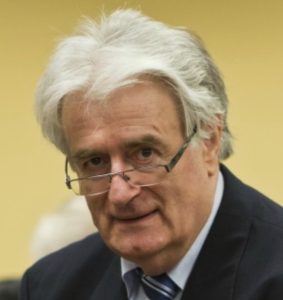
Radovan Karadzic, now 74, is currently serving a life sentence imposed by an illegal court for an unproven genocide – the alleged massacre of ‘up to 8,000 Muslim men and boys’ in Srebrenica.
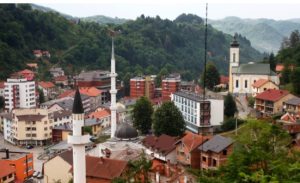
No one ever produced evidence of 8,000 bodies – that total simply happened to be the number of missing reported by family members to the International Red Cross. It bore no relation to events on the ground in Srebrenica. No one knew how many were dead or alive, who was where and when, let alone the circumstances in which they died.
If people are classified ‘missing’ their whereabouts are, self evidently, unknown. They could be missing for any number of reasons. All we may know is where they were last seen. To assume, without evidence, that everyone must therefore be a victim of genocide defies logic.
Individuals may have survived and be displaced persons. They may have died in military combat, been victims of summary execution or simply died of natural causes. Nevertheless, the international media instantly assumed every missing individual must be a victim of genocidal massacre. 8,000 victims made a good headline – a story that would run and run. The figure was never questioned, and by dint of endless repetition, the story stuck.
It is now established that the vast majority of those named, some 6,700, were in fact all men of military age, between 16 and 70 – all of whom had been drafted into the Bosnian army before the Serbs entered Srebrenica. As soldiers they were legitimate military targets, not a protected group as specified in the law on genocide.
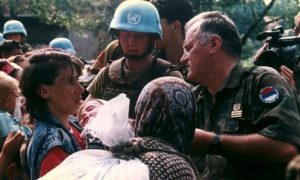
The Serbs were amazed to enter the town unopposed without a shot being fired. Although designated a UN safe area for Muslims, Srebrenica had not been demilitarised. It was bristling with weaponry and occupied by the 6,000 strong 28th division of the Bosnian Army.
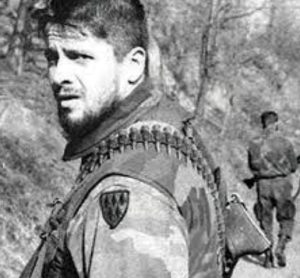
For three years up to July 1995, its brutal commander, Naser Oric, had used the town as a base for launching murderous attacks on surrounding Serb villages. Thousands were slaughtered, their homes and crops burned to the ground. This had naturally inflamed local tensions and fuelled hatred.
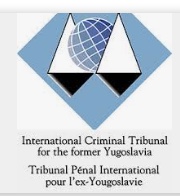
Everyone was aware of these facts but any evidence of Serb victimisation was relentlessy suppressed or totally ignored by the ICTY. It didn’t fit the official narrative that the only victims in Bosnia were innocent, defenceless Muslims being massacred by degenerate, genocidal Serbs.
At every turn details of violence against Serbs was rejected as ‘irrelevant’ and yet nothing was more relevant to an understanding of what unfolded at Srebrenica. Two years earlier the Bosnian vice premier, Zlatko Logumdjija, had told The Times of London “we shall be witnesses of a big massacre if Srebrenica falls.”

Testifying at the Tribunal in The Hague, General Philippe Morillon, commander of the UN Protection Force in Bosnia, described his security concerns in graphic terms:
“Naser Oric was a warlord who reigned by terror in his area and over the population itself. I think that he realized that those were the rules of this horrific war, that he could not allow himself to take prisoners. According to my recollection, he didn’t even look for an excuse. It was simply a statement: ‘One can’t be bothered with prisoners….'”
“I wasn’t surprised when the Serbs took me to a village to show me the evacuation of the bodies of the inhabitants that had been thrown into a hole, a village close to Bratunac. And this made me understand the degree to which this infernal situation of blood and vengeance led to a situation when I personally feared that the worst would happen if the Serbs of Bosnia managed to enter the enclaves and Srebrenica….I saw, a degree of absolute misery with a real risk of tens of thousands being killed. I feared that the Serbs, the local Serbs, the Serbs of Bratunac, these militiamen, they wanted to take their revenge for everything that they attributed to Naser Oric….”
When the Presiding judge asked Morillon, “Are you saying, then, General, that what happened in 1995 was a direct reaction to what Naser Oric did to the Serbs two years before?” And the witness answered, “Yes. Yes, Your Honour. I am convinced of that.”
On entering the town the Serbs found it had been abandoned by the 28th Division only hours earlier. Naser Oric had been recalled some weeks before. His men were ordered to make their way through Serb controlled territory to the Muslim safe haven of Tuzla. On their march they took with them every able-bodied male resident of military age which rendered the entire convoy of up to 15,000 men a legitimate military target.

There is now compelling evidence that this convoy was deliberately sacrificed by their own government to ensure NATO intervention. Srebrenica’s wartime chief of police, Hakija Meholjic, later informed the Sarajevo newspaper Dani that in September 1993, the Muslim leader Alija Izetbegovic had told him:

“You know, I was offered by [Bill] Clinton in April that the [Serbian] Chetnik forces enter Srebrenica, carry out a slaughter of 5,000 Muslims, and then there will be a [NATO] military intervention.”
Shockingly, despite a full awareness of the likely consequences, the Bosnian government did nothing to avoid the possibility of a bloody confrontation. Quite the contrary. They had long refused requests from Muslim refugees to leave the town and denied requests to supply them with more arms. The strong suspicion is they wanted sufficient numbers of potential victims in place to satisfy the Clinton criteria.
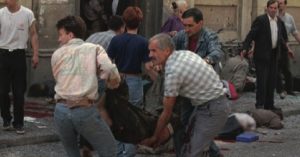
This concept of self sacrifice for the greater good was nothing new for the Muslims. In Sarajevo they faked a Serb attack on civilians queuing for bread in the market place to provoke outside intervention. Similar tactics were regularly employed by the KLA in Kosovo.
Following the Muslim breakout from Srebrenica towards Tuzla there were, as expected, constant battles, skirmishes and much bloodshed. There were heavy losses but nothing approaching 8,000. Army estimates from both sides agreed a total death toll of around 2,000.
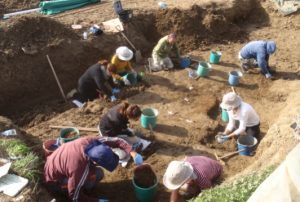
It is possible that there were incidents of mass execution but no concrete evidence of this was put before The Hague Tribunal. The court reached its verdicts solely on the basis of uncorroborated witness testimony and verbal reports from the American-run body, the International Commission for Missing Persons, which had carried out all the forensic and identification investigations. None of this evidence was ever put before the court or made available for independent verification. With laws passed in both Bosnia and Croatia which give the ICMP immunity to deny any request for this information, it seems there is no chance this crucial information will ever be released.
Subsequent independent forensic analysis of the pattern of bone damage has shown the overwhelming majority of fatalities were due to regular exchange of fire rather than point blank summary execution. The dead were victims of war, not genocide.
Sweeping assertions of genocide are seriously undermined by events on the ground. The fact that the Muslim women, children and elderly left behind in Srebrenica were all transported by the Serbs to safety in Tuzla is hard to reconcile with genocidal intent. So, too, is the testimony of Muslim troops arriving in Tuzla who told UN staff their wounded were given good medical care by the Serb army and that those captured were well treated. Genocidal killers don’t take prisoners.
Nevertheless, the Appeal Chamber was determined to demonise Karadzic as a bloody butcher right from the outset of the Bosnian war in the early 1990s. US Journalist Andy Wilcoxson closely followed every day of the original Karadzic trial and the Appeal hearing which led to his 40 year sentence being increased to life. He painstakingly recorded the machinations of the tribunal specially created by the Americans and their NATO allies to convict their political enemies. Here he addresses the harsh realities of war. He goes on to expose the highly selective approach taken by the Appeal chamber in its determination to grossly distort what was in reality a legitimate war of self defence.
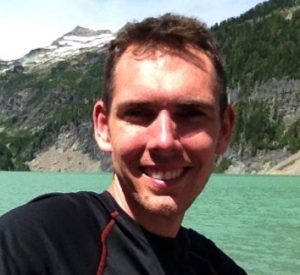
“War is a deadly and terrible business where people die. It’s common knowledge that people die in wars. The fact that Karadzic was predicting the obvious isn’t evidence of genocidal intent. The whole point of any war is to impose your will on your opponent through the use of lethal force. It’s barbaric, but at the end of the day that’s what all wars are about. The goal is to impose so much death and destruction on your opponent that they capitulate.
In exhibit P5846 Karadzic is having a conversation with an unknown man on October 12, 1991 and he says, “We will see tomorrow if they are ready, for reasonable deals which will guarantee both them and us that there will be no war” (but) “we have to count on the fact that they want to engage in combat. They have some weapons and they have been preparing and following the moves of the army. With MUP (Bosnian special police units) assistance, they are even trying to get anti-tank, actually armor piercing weapons.”
Karadzic said, “These Muslims want to have a war” and “attacks are being planned, blockades of barracks are being planned and all that is being planned for next week.”
The part that the appeals chamber zeroes in on is the part where he says, “I think that not even Alija [Izetbegovic] holds all the strings” because “a number of sensible Muslims [are] turning away [from Izetbegovic]. Last night after my speech in the Assembly they called the Muslims here and congratulated them. Nobody called to provoke them, they called the Muslims and congratulated. Therefore, the Muslims know what it is, it is hell in which five-six hundreds of thousands of them will disappear.”
Karadzic is expressing hope that the Muslims would turn away from Izetbegovic and thereby avoid the easily predictable horrors of war. Again, he’s not saying that his goal is to exterminate the Bosnian Muslims and wipe-out their ethnic group.” (www.slobodan-milosevic.org)
The Serbs were fighting to preserve Yugoslavia and its multiculturalism, to protect their threatened national identity and resist an illegal armed insurgency. That is not extreme nationalism. The drive for a Greater Serbia was always a convenient fiction. The drive for a Greater Albania and Muslim Bosnia was a long-established and inconvenient fact.
To wilfully misrepresent a legitimate right to self defence as a genocide is a big lie worthy of Dr. Goebbels himself. As a victim of such egregious injustice and inhumane treatment Dr. Karadzic might well feel entitled to a laptop in his cell.